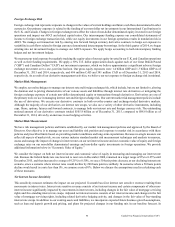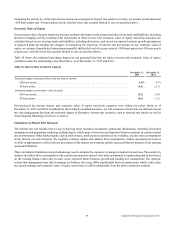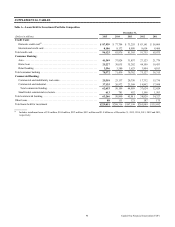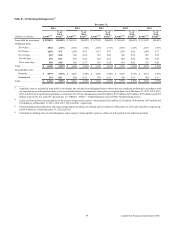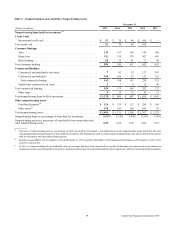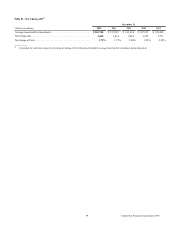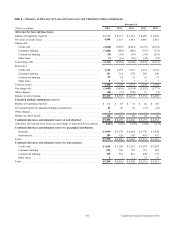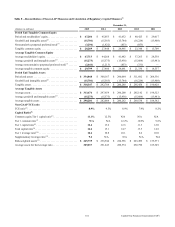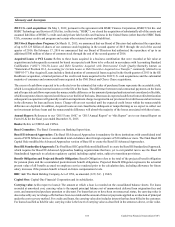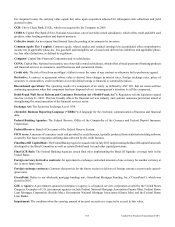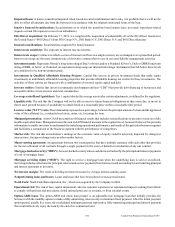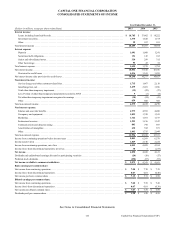Capital One 2015 Annual Report Download - page 123
Download and view the complete annual report
Please find page 123 of the 2015 Capital One annual report below. You can navigate through the pages in the report by either clicking on the pages listed below, or by using the keyword search tool below to find specific information within the annual report.
104 Capital One Financial Corporation (COF)
Glossary and Acronyms
2012 U.S. card acquisition: On May 1, 2012, pursuant to the agreement with HSBC Finance Corporation, HSBC USA Inc. and
HSBC Technology and Services (USA) Inc. (collectively, “HSBC”), we closed the acquisition of substantially all of the assets and
assumed liabilities of HSBC’s credit card and private label credit card business in the United States (other than the HSBC Bank
USA, consumer credit card program and certain other retained assets and liabilities).
2015 Stock Repurchase Program: On March 11, 2015, we announced that our Board of Directors had authorized the repurchase
of up to $3.125 billion of shares of our common stock beginning in the second quarter of 2015 through the end of the second
quarter of 2016. On February 17, 2016 we announced that our Board of Directors had authorized the repurchase of up to an
additional $300 million of shares of common stock through the end of the second quarter of 2016.
Acquired Loans or PCI Loans: Refers to these loans acquired in a business combination that were recorded at fair value at
acquisition and subsequently accounted for based on expected cash flows to be collected in accordance with Accounting Standard
Codification (“ASC”) 310-30, Loans and Debt Securities Acquired with Deteriorated Credit Quality (formerly known as
“Statement of Position 03-3, Accounting for Certain Loans or Debt Securities Acquired in a Transfer,” commonly referred to as
“SOP 03-3”). Our Acquired Loans include a limited portion of commercial loans acquired in the fourth quarter of 2015 in the GE
Healthcare acquisition, a limited portion of the credit card loans acquired in the 2012 U.S. card acquisitions and the substantial
majority of consumer and commercial loans acquired in the ING Direct and Chevy Chase acquisitions.
The excess of cash flows expected to be collected over the estimated fair value of purchased loans represents the accretable yield,
which is recognized into interest income over the life of the loans. The difference between total contractual payments on the loans
and all expected cash flows represents the nonaccretable difference or the amount of principal and interest not considered collectible,
which incorporates future expected credit losses over the life of the loans. Decreases in expected cash flows from credit deterioration
subsequent to acquisition will generally result in an impairment charge recognized in our provision for credit losses and an increase
in the allowance for loan and lease losses. Charge-offs are not recorded until the expected credit losses within the nonaccretable
difference are depleted. In addition, Acquired Loans are not classified as delinquent or nonperforming as we expect to collect our
net investment in these loans and the nonaccretable difference will absorb the majority of the losses associated with these loans.
Annual Report: References to our “2015 Form 10-K” or “2015 Annual Report” or “this Report” are to our Annual Report on
Form 10-K for the fiscal year ended December 31, 2015.
Banks: Refers to COBNA and CONA.
Basel Committee: The Basel Committee on Banking Supervision.
Basel III Advanced Approaches: The Basel III Advanced Approaches is mandatory for those institutions with consolidated total
assets of $250 billion or more or consolidated total on-balance sheet foreign exposure of $10 million or more. The Final Basel III
Capital Rule modified the Advanced Approaches version of Basel II to create the Basel III Advanced Approaches.
Basel III Standardized Approach: The Final Basel III Capital Rule modified Basel I to create the Basel III Standardized Approach,
which requires for Basel III Advanced Approaches banking organizations that have yet to exit parallel run to use the Basel III
Standardized Approach to calculate regulatory capital, including capital ratios, subject to transition provisions.
Benefit Obligation and Projected Benefit Obligation: Benefit Obligation refers to the total of the projected benefit obligation
for pension plans and the accumulated postretirement benefit obligations. Projected Benefit Obligation represents the actuarial
present value of all benefits accrued on employee service rendered prior to the calculation date, including allowance for future
salary increases if the pension benefit is based on future compensation levels.
BHC Act: The Bank Holding Company Act of 1956, as amended (12 U.S.C. § 1842).
Capital One: Capital One Financial Corporation and its subsidiaries.
Carrying value (with respect to loans): The amount at which a loan is recorded on the consolidated balance sheets. For loans
recorded at amortized cost, carrying value is the unpaid principal balance net of unamortized deferred loan origination fees and
costs, and unamortized purchase premium or discount. For loans that are or have been on nonaccrual status, the carrying value is
also reduced by any net charge-offs that have been recorded and the amount of interest payments applied as a reduction of principal
under the cost recovery method. For credit card loans, the carrying value also includes interest that has been billed to the customer.
For loans classified as held for sale, carrying value is the lower of carrying value as described in the sentences above, or fair value.


